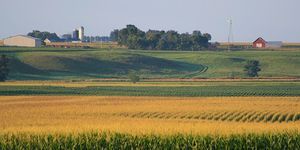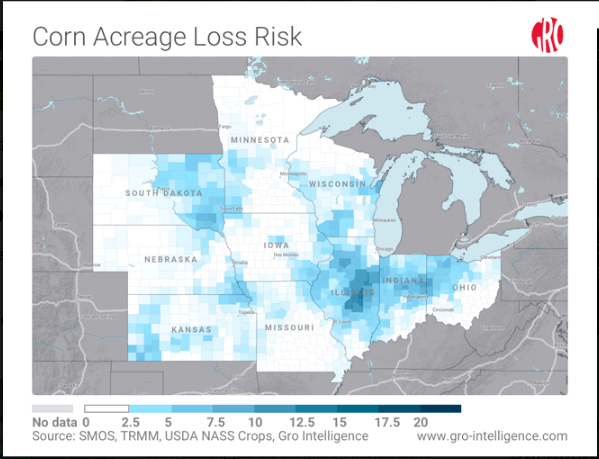Acreage Unknowns Create Uncertainty Around Corn Supply and Demand
 As the calendar turns to August, analysts are usually focused on estimating corn yields in anticipation of USDA’s first field survey. But this year, analysts are still trying to pin down an acreage estimate.
As the calendar turns to August, analysts are usually focused on estimating corn yields in anticipation of USDA’s first field survey. But this year, analysts are still trying to pin down an acreage estimate.
“I don’t recall any year like this where it was just such a black hole of information in late July,” DTN Lead Analyst Todd Hultman said. “Usually, that acreage estimate sets the tone for the rest of the year. If we’re reasonably confident about the acres that got planted, then there’s not that much uncertainty in the rest of it.”
Hultman said most corn acreage estimates he’s seen range from about 86 million to 89 million acres (ma), compared to USDA’s estimate in late June of 91.7 ma. The agency will release an updated acreage forecast along with its Crop Production and World Agricultural Supply and Demand Estimates report on Aug. 12.
“If USDA comes up with anything less than 86 million acres, that’s going to be a bullish surprise to the market and will significantly reduce corn stocks below what people are expecting,” he said. “The other part of this is yield, and that’s something we don’t have a good handle on.”
The National Agricultural Statistics Service used to conduct a field survey to help form its yield estimate in August, but it decided to end that practice earlier this year. USDA will still release an updated yield estimate based on farmer surveys and satellite imagery. (For more information on the change, please read: https://www.dtnpf.com/…)
Hultman said there was usually quite a bit of uncertainty around that August yield estimate, and with the corn crop progressing at least 10 days behind schedule, it probably wouldn’t have been too helpful in a year like this one.
Gro Intelligence, an agricultural data analytics firm, said this year’s prevented planting acreage is highly concentrated, with half of the combined corn and soybean prevented planting acreage in 12% of the Corn Belt’s nearly 1,600 counties.


“The same areas where we saw the prevent plant numbers in the Corn Belt all look like they’ll have a pretty big decline in yields,” said Gro Intelligence senior research analyst Will Osnato. Gro’s yield models are based on several types of publicly available crop and environmental data, with machine learning methods refining its yield predictions.
One of the pieces Gro uses in its yield estimates is the normalized difference vegetation index (NDVI), which essentially measures the greenness of the crop to gauge yield potential.
“The NDVI is the second lowest on record for Illinois, Indiana and Ohio at this point in the season,” he said.
For more on Gro’s methods, visit: https://www.gro-intelligence.com/…
Gro Intelligence will be sharing its corn and soybean yield estimates for 10 states with DTN during the DTN/Progressive Farmer Digital Yield Tour. From Aug. 12-16, DTN reporters will combine Gro’s state-level yield estimates and on-the-ground reports from farmers in 10 states to craft a picture of how the crop is progressing.
Hultman said anticipation of a smaller crop is already beginning to affect the demand side of the balance sheet, and he’s seen estimates of new-crop ending stocks that vary by as much as a billion bushels.
“The export market has really fallen off quickly, and I think a lot of us have concerns about ethanol demand being sustained when the margins are pretty poor,” he said.
Noncommercial traders also held a fairly large net-long position of about 287,000 contracts at the end of last week, and Hultman said that figure is likely to shrink ahead of the next USDA report.
“I think they’re getting a little nervous about hanging on to that,” he said, adding that he thinks that’s one reason behind lower corn prices this week. Even though prices are lower than their recent peak around $4.70 per bushel, prices are still above the five-year average, and Hultman said farmers should consider locking prices on 25% to 50% of their anticipated production.
“The report on Aug. 12 may or may not be bullish,” he said. “If it’s not bullish — if farmers actually got more corn planted than we guessed — it’s going to be hard to support these higher prices, especially since we’re looking at pretty mild temperatures heading into the pollination period right now. As bad as the delayed planting is, it may be tough to sustain these prices if we don’t get a lower-than-expected acreage estimate.”
Katie Dehlinger can be reached at Katie.dehlinger@dtn.com
Follow her on Twitter @KatieD_DTN
Source: Katie Dehlinger, DTN
